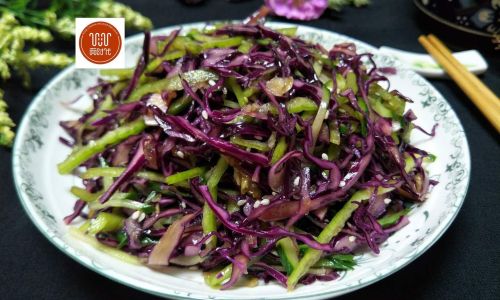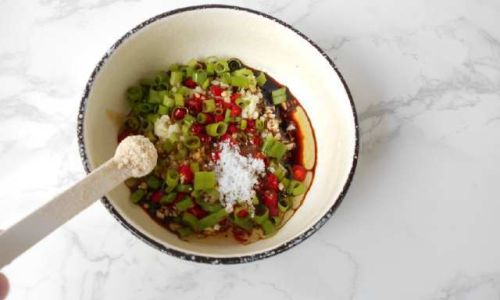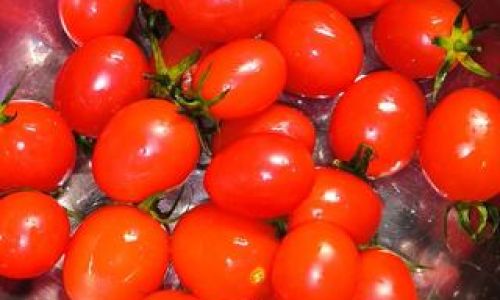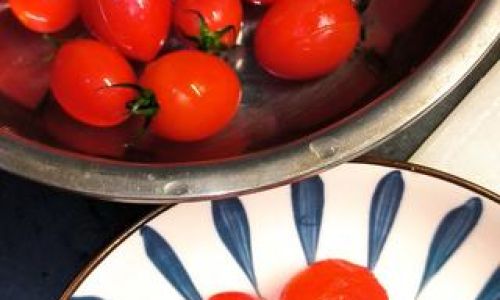In an era where home cooks are increasingly seeking ways to preserve nutrients, enhance natural flavors, and simplify meal preparation, the age-old practice of stir-frying over high heat is taking a backseat. While the sizzle of a wok and the aroma of seared ingredients have long been celebrated in culinary traditions, modern cooking trends are embracing alternative methods that deliver freshness, complexity, and depth—all without ever lighting a burner. This article explores innovative techniques to coax out vibrant, umami-rich flavors using raw preparations, marinades, fermentation, and other heat-free strategies. By prioritizing texture, acidity, and enzymatic reactions, these approaches not only save time but also unlock new dimensions of taste that traditional cooking methods often obscure.
The Case Against Constant Heat
Stir-frying, while efficient, subjects ingredients to intense, rapid heat. This process can degrade delicate nutrients like vitamin C and B vitamins, which are sensitive to high temperatures. Moreover, the Maillard reaction—responsible for the browned, caramelized flavors in cooked dishes—can sometimes overshadow the subtle, natural tastes of fresh produce. By eliminating high heat, cooks can retain the crispness of vegetables, the juiciness of proteins, and the bright acidity of citrus, resulting in dishes that feel lighter yet more intensely flavored.
Raw Power: Embracing Uncooked Ingredients
The simplest way to avoid heat is to serve ingredients in their raw state. However, this doesn’t mean sacrificing sophistication. Consider the vibrant crunch of a well-composed ceviche, where lime juice “cooks” fish through acid denaturation, creating a silken texture and citrus-forward flavor. Similarly, shaved fennel or radish in salads offers a refreshing anise-like bite when paired with herbs like mint or dill.
Technique Tip: Use a mandoline or sharp knife to achieve paper-thin slices of vegetables. Thinner cuts not only enhance texture but also allow delicate marinades to penetrate quickly.
Marinades: The Flavor Alchemists
Marinades are the unsung heroes of no-cook cuisine. Acidic ingredients like vinegar, citrus juice, or yogurt break down tough proteins in meats and seafood while infusing them with herbs, spices, and aromatics. For plant-based dishes, marinades tenderize vegetables like cucumbers or onions, mellowing their sharpness and imbuing them with savory or sweet notes.

Example: A 24-hour marinade of olive oil, garlic, smoked paprika, and sherry vinegar can transform raw shrimp into a tender, smoky-tart appetizer. For a vegetarian twist, marinate cherry tomatoes in balsamic vinegar, basil, and a pinch of sugar for an hour to concentrate their sweetness.
Fermentation: The Ancient Art of Umami
Fermentation is a heat-free process that harnesses microorganisms to create profound flavor. When vegetables like cabbage, carrots, or cucumbers are submerged in a salty brine, lactic acid bacteria convert sugars into acids, producing tangy, complex tastes. Kimchi, sauerkraut, and giardiniera are prime examples of how fermentation elevates raw ingredients into umami-packed powerhouses.
Pro Tip: Even a short fermentation period (24–48 hours) can yield noticeable flavor benefits. Experiment with adding spices like coriander seeds or chili flakes to customize your brine.
Ceviche: A Masterclass in Acidic Transformation
Ceviche, a Latin American staple, exemplifies how citrus can mimic the effects of heat. The acid in lime or lemon juice denatures proteins in fish or shellfish, creating a firm texture akin to cooking. Simultaneously, the juice infuses the seafood with bright, tangy flavors. Pair ceviche with avocado, cilantro, and red onion for a balance of richness and freshness.
Variation: For a vegetarian ceviche, use marinated hearts of palm or jicama. Toss with mango chunks and jalapeño for a tropical twist.
Cold Soups: Refreshing and Flavor-Packed
Chilled soups like gazpacho or vichyssoise celebrate raw ingredients at their peak. The key is to use ripe, in-season produce—think juicy tomatoes, sweet cucumbers, or fragrant herbs—and blend them with complementary flavors. A touch of sherry vinegar or smoked salt can add depth without heat.
Recipe Idea: For a watermelon gazpacho, blend seedless watermelon with cucumber, bell pepper, and a splash of rice vinegar. Garnish with feta crumbles and mint for a sweet-savory contrast.
Herbs and Spices: The Freshness Factor
Raw herbs like cilantro, basil, and mint are flavor bombs that lose their potency when cooked. Use them generously in salads, dressings, or garnishes. For a spicy kick, finely chop fresh chili peppers or grind dried spices like cumin or coriander into marinades.

Innovation: Make a vibrant green sauce by blending cilantro, jalapeño, garlic, and olive oil. Use it as a dressing for grilled (or raw!) vegetables.
Infusions and Oils: Liquid Flavor Carriers
Infuse oils with garlic, herbs, or chili to create aromatic dressings or drizzles. The process requires no heat—simply combine ingredients in a jar and let time work its magic. For a quick infusion, crush garlic with salt and let it sit in oil for 30 minutes; the salt draws out moisture, mellowing the garlic’s bite.
Safety Note: Avoid infusing oils with fresh herbs for extended periods, as moisture can lead to botulism. Opt for dried herbs or consume within a few days.
Pickling: Instant Flavor Boosts
Quick-pickled vegetables add a tangy crunch to dishes without the need for heat. Use a mixture of vinegar, sugar, salt, and aromatics like mustard seeds or dill to transform cucumbers, red onions, or radishes. The acidity balances rich foods like fried chicken or fatty meats.
Pro Tip: For a Korean-inspired twist, pickle daikon radish and carrots in a rice vinegar, sugar, and gochugaru (Korean chili flakes) brine.
No-Cook Sauces: From Pesto to Salsa Verde
Sauces made with raw ingredients can elevate simple dishes. Pesto, traditionally made with basil, pine nuts, and Parmesan, requires no cooking—just a mortar and pestle or food processor. Similarly, salsa verde, a Mexican staple, blends tomatillos, cilantro, and jalapeños into a zesty condiment.
Variation: Swap basil for arugula in pesto for a peppery kick, or use mint and pistachios for a Middle Eastern-inspired twist.
Enzymatic Magic: Using Fruits to Tenderize
Certain fruits contain enzymes that break down proteins, effectively “cooking” meat without heat. Pineapple, papaya, and kiwi are rich in bromelain and papain, which tenderize beef or fish when used in marinades.

Application: Marinate beef tartare in pineapple juice for 15 minutes to soften the texture, then mix with capers, shallots, and olive oil.
Cold Appetizers and Main Courses
Raw dishes don’t have to be limited to salads. Think crudo (thinly sliced raw fish or meat), seafood tartare, or chilled pasta salads with raw zucchini ribbons and cherry tomatoes. For a heartier option, serve a platter of prosciutto-wrapped melon with burrata and balsamic glaze.
Presentation Tip: Use a ring mold to shape raw tuna tartare into neat cylinders. Top with avocado mousse and microgreens for an elegant starter.
Desserts Without an Oven
Heat-free desserts rely on fresh fruits, nuts, and creamy bases. Whip up a raw vegan cheesecake by blending cashews, coconut oil, and maple syrup, then chilling until firm. For a quicker treat, roll energy balls from dates, oats, and cocoa powder.
No-Bake Recipe: Layer crushed graham crackers with a mixture of soaked cashews, lemon juice, and agave for a lemon tart that needs no baking.
The Health Perks of No-Cook Cooking
Beyond flavor, avoiding heat offers nutritional advantages. Raw vegetables retain more vitamins and enzymes, which aid digestion. Fermented foods introduce probiotics, supporting gut health. Additionally, reducing reliance on stovetop cooking lowers energy consumption, aligning with eco-friendly practices.
Overcoming Common Challenges
- Texture Issues: Raw vegetables can be fibrous. Use a peeler to shave asparagus or carrots into thin ribbons, or massage kale with salt to soften it.
- Flavor Balance: Without the Maillard reaction, dishes may lack depth. Combat this with umami-rich ingredients like nutritional yeast, miso, or sun-dried tomatoes.
- Safety: When working with raw seafood or meat, source high-quality ingredients and follow food safety guidelines.
Conclusion: A New Frontier in Flavor
The rise of no-cook cuisine reflects a broader shift toward mindful eating—prioritizing freshness, nutrition, and creativity. By mastering techniques like fermentation, marination, and raw preparations, home cooks can craft dishes that burst with vibrant, layered flavors without ever turning on a stove. Whether you’re whipping up a zesty ceviche, a tangy fermented salsa, or a creamy no-bake dessert, these methods prove that heat isn’t always the answer to a memorable meal. So the next time you’re tempted to reach for the wok, pause and consider: Could this dish shine even brighter without the fire? The answer might surprise your taste buds.






0 comments